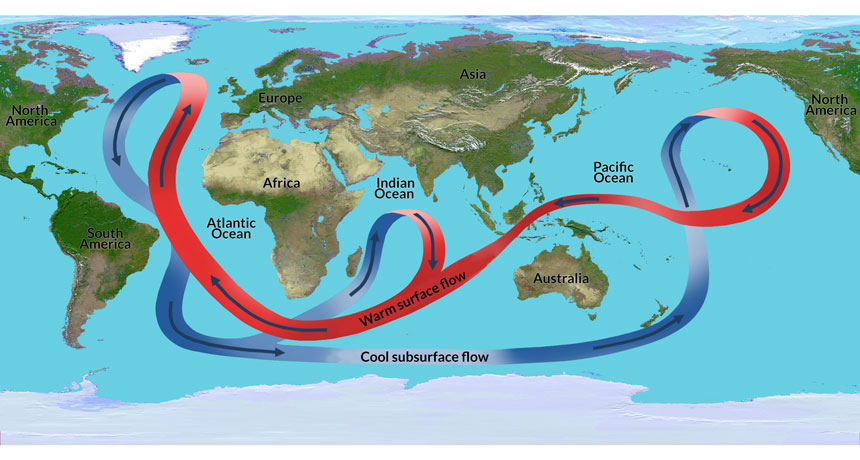Warming could disrupt Atlantic Ocean current
New simulations revise freshwater impact on circulation’s stability

CONVEYOR BELT Rising temperatures could shut down the Atlantic Ocean current (depicted here) that helps warm northwestern Europe, a new simulation shows.
JPL-Caltech/NASA